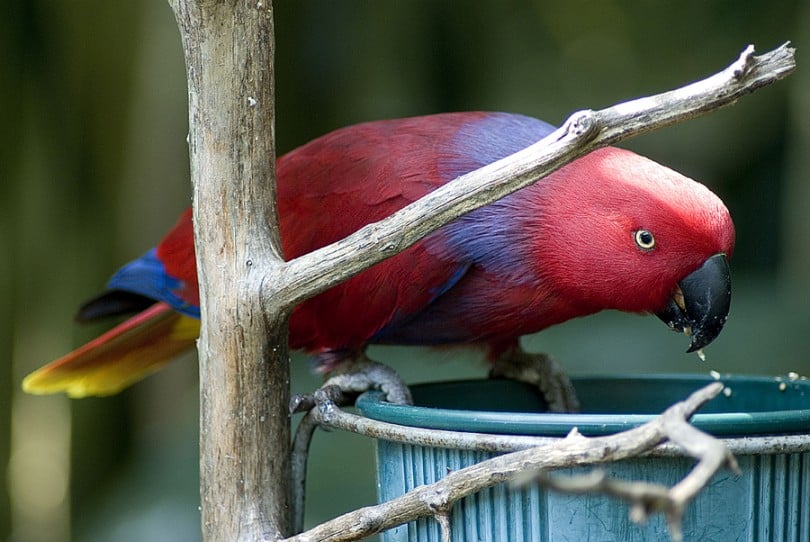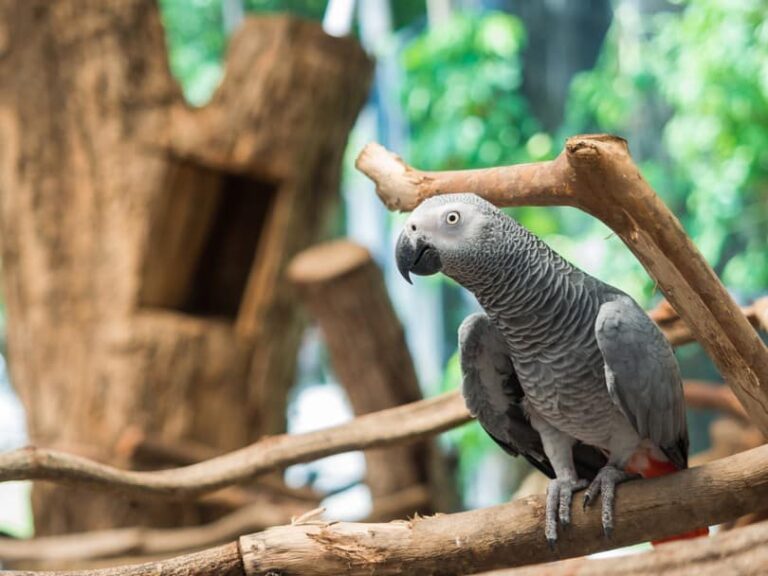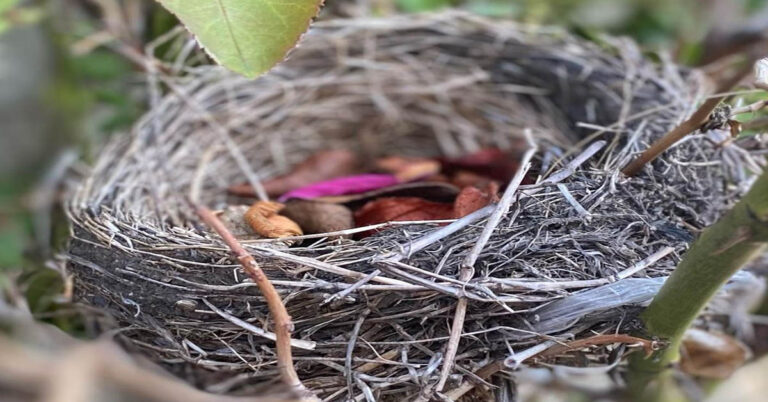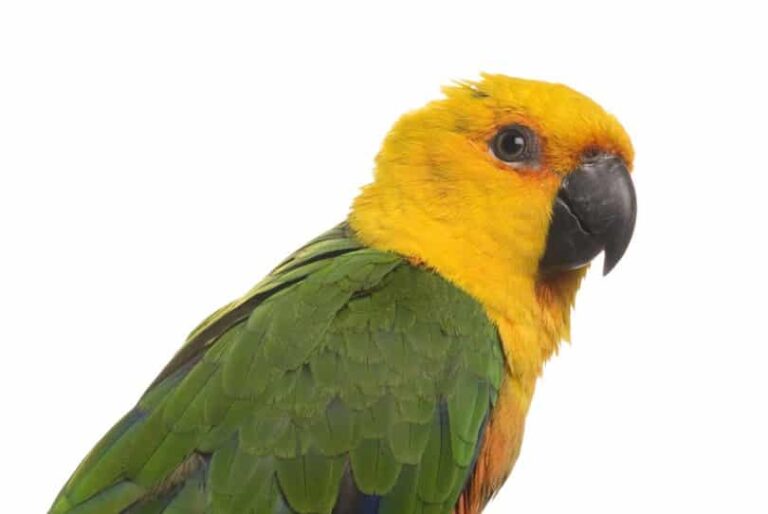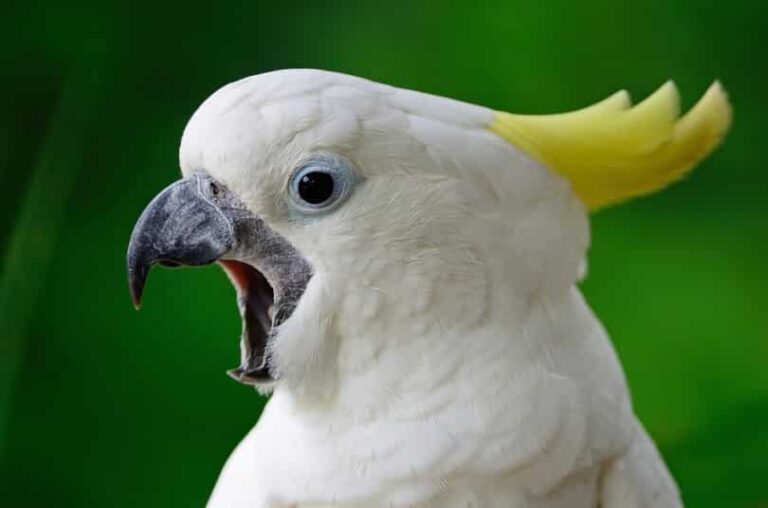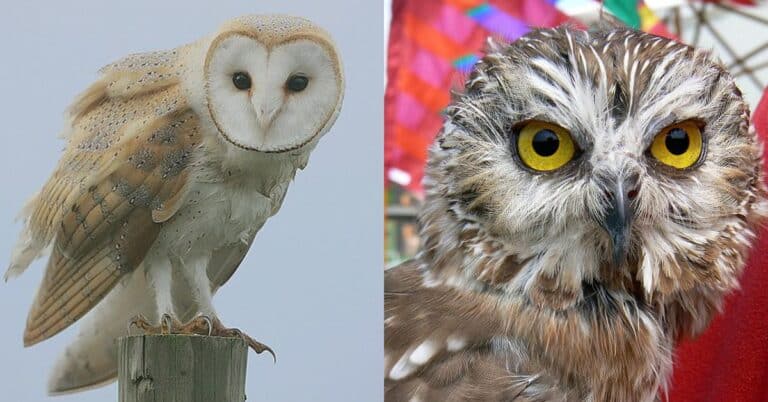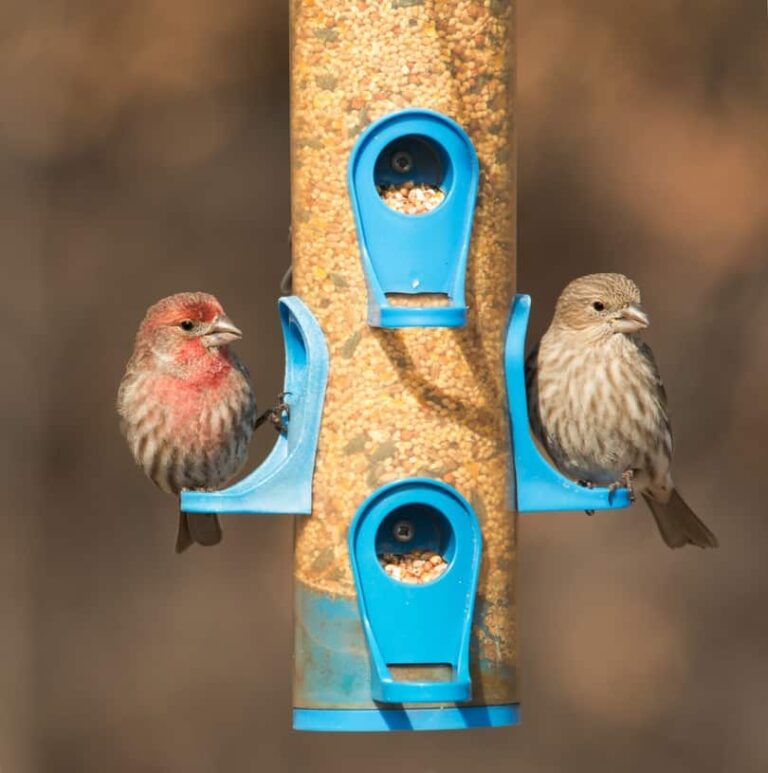Eclectus Parrots
Eclectus Parrots are basically from the Eclectus Roratus species that come under the Eclectus genus. They are predominantly endemic to the Solomon Islands, north-eastern Australia, New Guinea, Sumba, and the nearby islands. The male bird is very much different in appearance from the female bird. The colorful feathers of these birds are used for decorative purposes by the natives of Guinea.
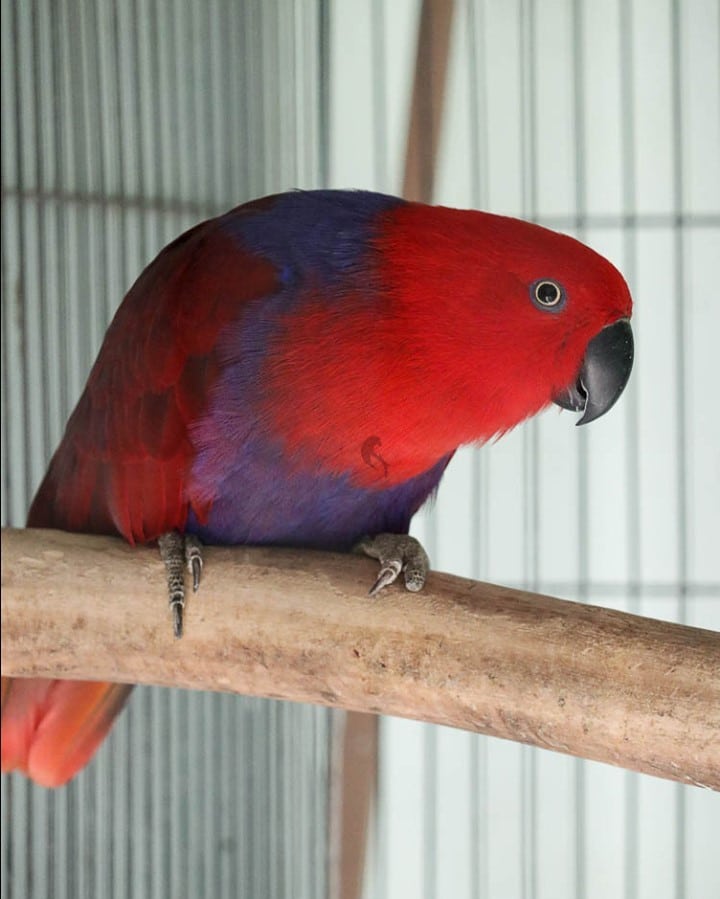
Description
The Eclectus Parrots are short-tailed and stocky birds that grow about 14 inches in length, and weigh around 430 to 500 gm. It has a wingspan of 2 to 2 ½ feet. There is a great sexual dimorphism as seen in the in the plumage colors. The male bird possesses a bright green plumage with a splash of yellow shade on the head. It also has red flanks, coverts under the wings and blue colored primaries. The tail is green in color with fine bands of yellow shade. The edge part of the tail displays a blue shade, and the under portion of the tail is creamy yellow in color. The female is entirely different in appearance; it basically has a red plumage, and has darker hues on the back and wings. The coverts under the wings and the mantle has a dark purple shade, and the edge of the tail has a mauve-blue color. The tail edge has a yellowish- orange shade, and the under portion of the tail has a combination of yellow and orange color. They have a lifespan of around 40 years in the wild, and 80 years in captivity.
Reproduction
There is no specific breeding season for the Electus Parrots, they can mate throughout the year. These birds are sexally mature after 3 years, polygamous in nature, and mate with several other birds. In the wild, they form nests in the cavity or hollowsn present in the trees. The male bird tries to attract and impress the female bird by making squawking call. A few days after mating, the female bird lays 2 eggs in a clutch, which she incubates for nearly 26 days. During the incubation period, the female bird is fed by her mate or some other male bird. Sometimes, young male juveniles hatched in the previous breeding period also help in the process of nesting. This type of cooperative nesting is very commonly seen in other species of birds like apostle-birds, babblers and many more. The young ones mature in 12 weeks, and leave the nest by flying independently.
Habitat
Several subspecies of these birds are confined to mainland Australia. It is specifically found in Queensland and adjacent areas. The subspecies like Eclectus Roratus Macgillivrayi is native to the Eastern Cape York Peninsula’s, McIlwraith Ranges. It can be seen mainly in the lowland rainforest edges and in the interiors at a higher altitude. The other subspecies named as E.R. Polychlorus inhabits the islands of Torres Strait. The remaining subspecies have originated from other regions like New Guinea, Indonesia and many islands in the Pacific.
Types of Eclectus Parrot
The Eclectus species are subdivided into 9 subspecies that consist of birds that are different in color, appearance and shape. Those sub-species are-:
Red-sided Eclectus
The Eclectus Roratus Polychlorus Red Sided Eclectus species of birds are similar to the Australian Eclectus bird. It grows about 35 to 38cm in length, and gains a weight of 235 to 264 mm.
Grand Eclectus
The Eclectus Roratus Grand Eclectus species of birds are also known as Ceram Eclectus that inhabit Southern and central Maluku, Ceram and Buru islands. It grows about 34 to 35 cm in length, and weighs around 225 to 242 grams.
Aru Eclectus
The Eclectus Roratus Aruensis Aru Eclectus species is from the Aru Island. It has a wing span of 247-270 mm, and attains an average length of 35 to 39 cm.
Vosmaeri Eclectus
The Eclectus Roratus Vosmaeri Eclectus species consist of birds originated from Central and Northern Maluku, Kayao, Mare, Batjan, Morotai and Damar islands. These birds grow about 37 to 38 cm in length, and have a wingspan of 210 to 261 mm.
Solomon Island Eclectus
The Eclectus Roratus Solomonens is Solomon Island Eclectus species of birds are similar in appearance to the Grand Eclectus birds. The average length in which it is seen is between 33 and 35 cm and has a wing span of 218 to 258mm.
Australian Eclectus
The Eclectus Roratus Macgillivrayi Australian Eclectus birds have originated from Eastern Cape York Peninsula, Pascoe river, Iron Range and McIlwraith Range. This is the largest subspecies of Eclectus birds. Usually these birds grow double in size compared to the Red Sided Eclectus. It grows about 40 to 45 cm in length and has a wingspan of 277 to 298mm.
Sumba Island Eclectus
The Eclectus Roratus Cornelia Sumba Island Eclectus are endemic to Sumba islands and grow about 37 to 40cm in length with a wingspan of 214 to 253mm
Biak Eclectus
The Eclectus Roratus Biak Eclectus species of birds are native to Biak islands and grow about 35cm in length, and attain a wingspan of 215 to 242mm.
Tanimbar Island Eclectus
The Eclectus Roratus Riedeli Tanimbar Island Eclectus species of birds grow about 33 to 34 cm and have a wingspan of 214 to 220mm.
Food
Every parrot requires a balanced diet to be healthy and have a long life span. Hence your pet bird’s diet should consist of all the nutrients needed for its growth. A seed-diet is essential, but avoid the ones consisting of vitamins, added colors and preservatives. The pellet diet should be provided 3 times a week in a small quantity. Their diet must comprise of 60% of fruits and vegetables and 20% of seeds, pulses or legumes. You can also provide them with protein rich foods like:
- Almonds
- Cooked chicken or meat
- Pumpkin seeds
- Boiled eggs
- Sweet corn
- Cauliflower
- Broccoli
Cage
These birds usually grow only about 14 to 15 inch but are found obese. Hence it requires a big cage enough for doing exercise like climbing the bars and flying inside. The cage should be at least 3 to 5 feet tall, and should have a base of 2 to 3 feet. The macaw cage will be suitable for these types of birds. Select a square shaped cage that can provide enough space. The other ideal features for an Eclectus Parrot cage is stainless steel product, casters, removable tray, bottom made of wire grate and doors of drawbridge type. It should also consist of perches and dishes for food and water.
Care
The Eclectus Parrots require regular care and affection. You should spend at least 3 to 4 hours a day with your pet. Provide enough toys to play that are made from soft wood. Regular supply of water and healthy food should be provided. These birds prefer bathing, hence providing a shallow vessel with water for bathing will make them enthusiastic. You can also use spray bottles to sprinkle water on their body especially during the warm season.

Having discovered a fondness for insects while pursuing her degree in Biology, Randi Jones was quite bugged to know that people usually dismissed these little creatures as “creepy-crawlies”.

